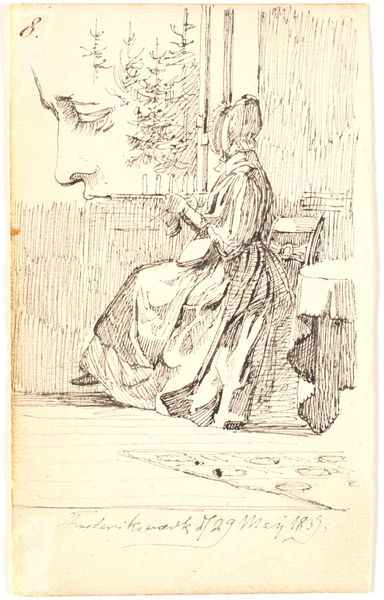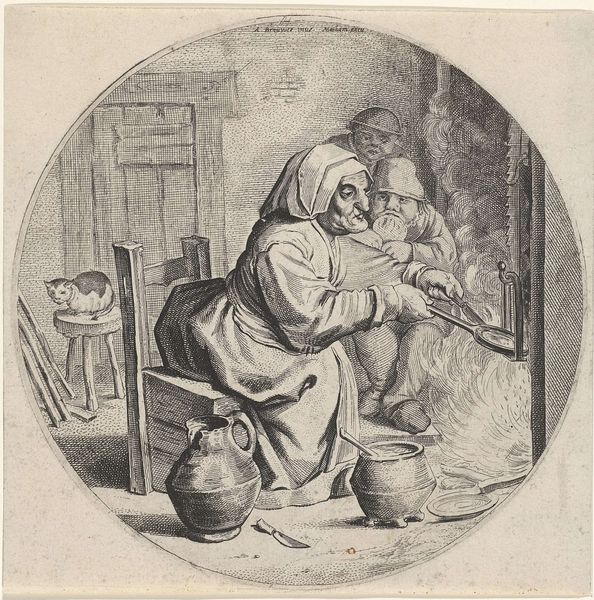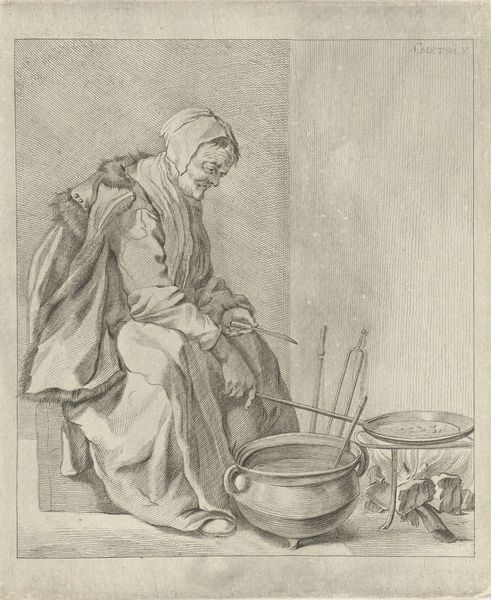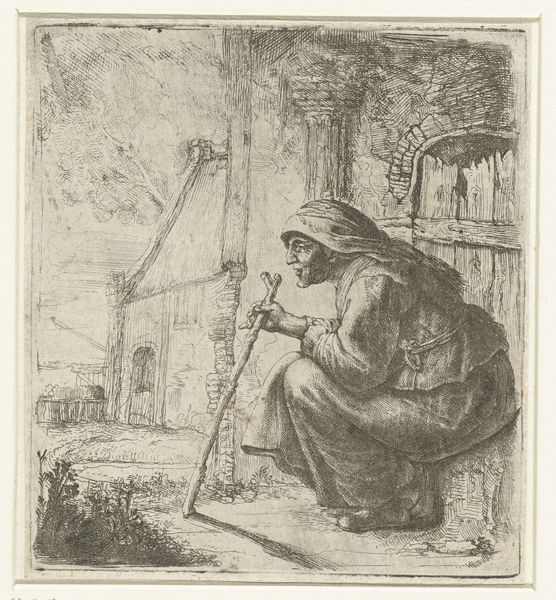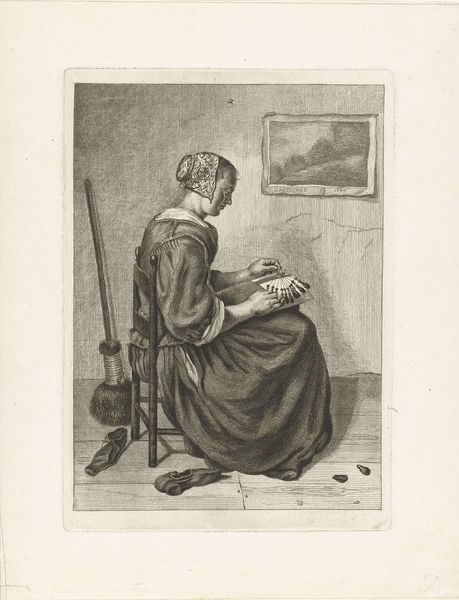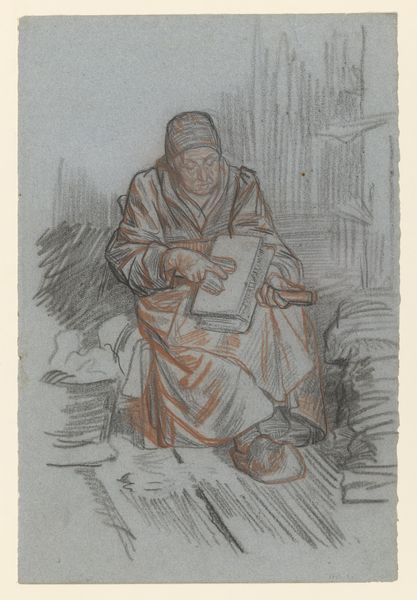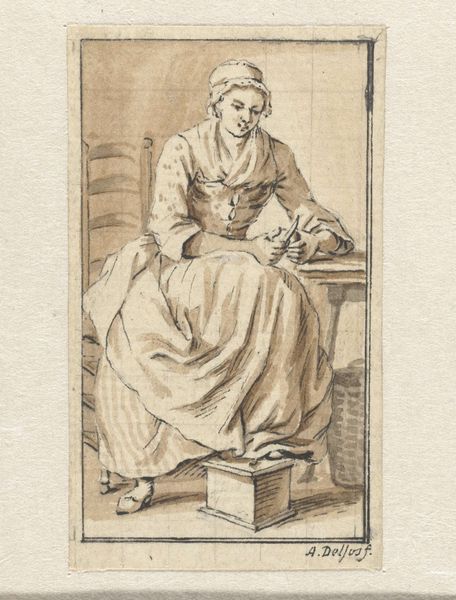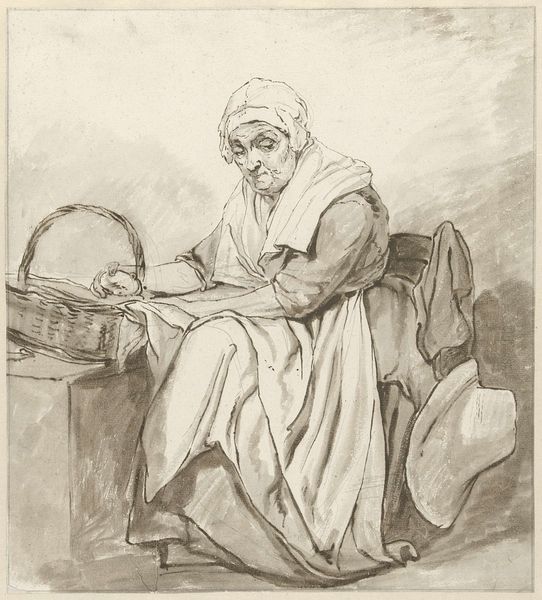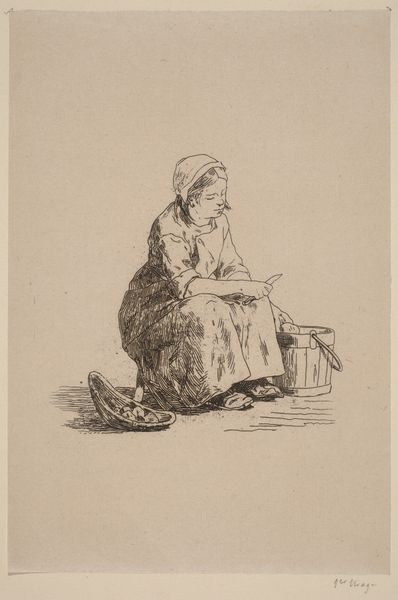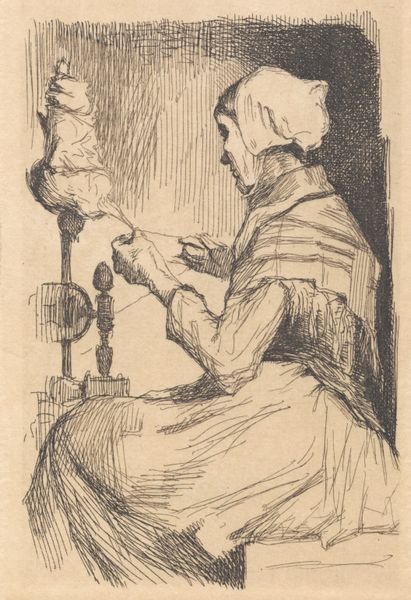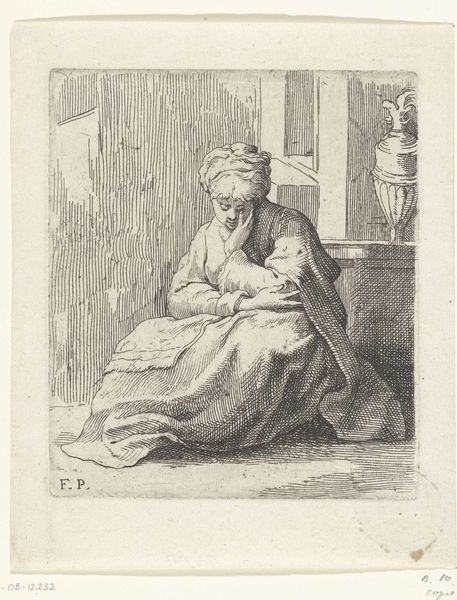
drawing, paper, pencil
#
portrait
#
drawing
#
toned paper
#
light pencil work
#
quirky sketch
#
narrative-art
#
dutch-golden-age
#
pencil sketch
#
sketch book
#
figuration
#
paper
#
personal sketchbook
#
sketchwork
#
pen-ink sketch
#
pencil
#
line
#
sketchbook drawing
#
genre-painting
#
sketchbook art
#
realism
Copyright: Rijks Museum: Open Domain
This drawing of a peasant interior with a woman at a spinning wheel was created by Cornelis Saftleven in the 17th century. Saftleven has used chalk and gray wash to define the woman and her spinning wheel, the textures of the walls, and even the fur of the cat, which is curled up in the foreground. He's interested in the textures and forms of the everyday, depicting a woman engaged in domestic labor. Spinning was, of course, an essential cottage industry, with women and children responsible for transforming raw fleece into thread. The spinning wheel itself is a marvel of simple technology, a tool that increases the speed and efficiency of hand spinning, a testament to the ingenuity of vernacular design. By drawing attention to this scene, Saftleven acknowledges the importance of labor within the domestic sphere and the wider economy. It's a reminder that art doesn't just reside in formal portraiture, but in the close observation of everyday activities and the tools that enable them.
Comments
No comments
Be the first to comment and join the conversation on the ultimate creative platform.
